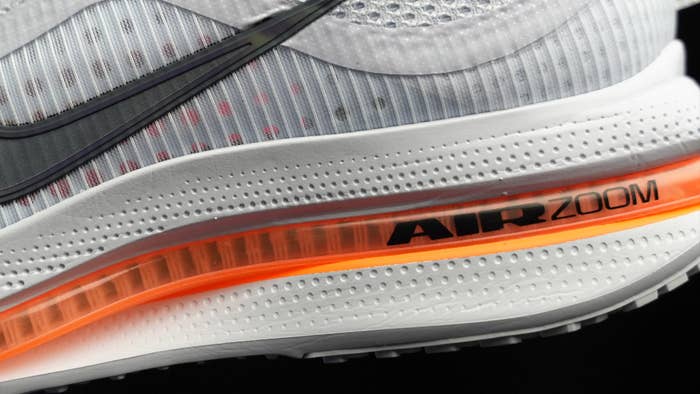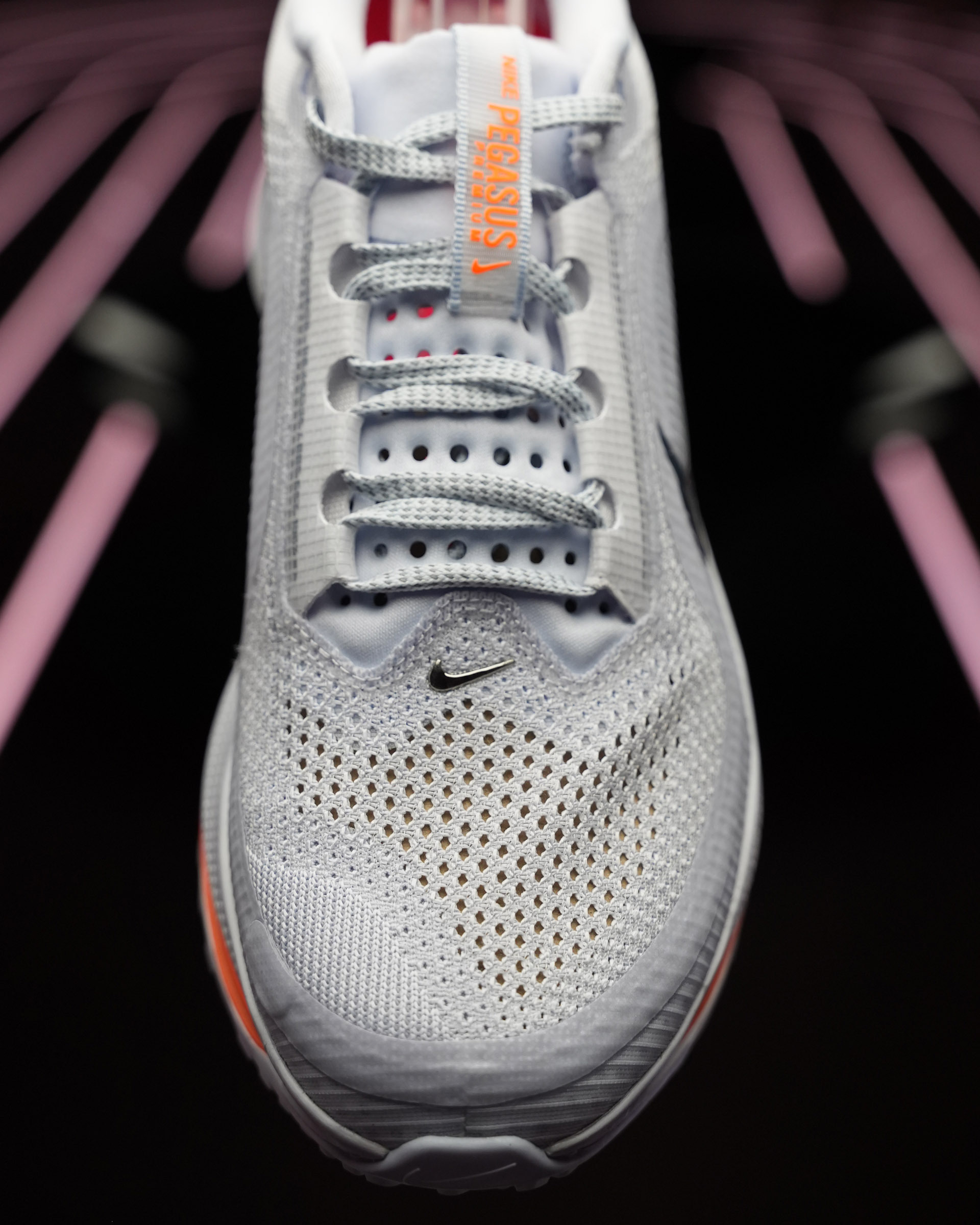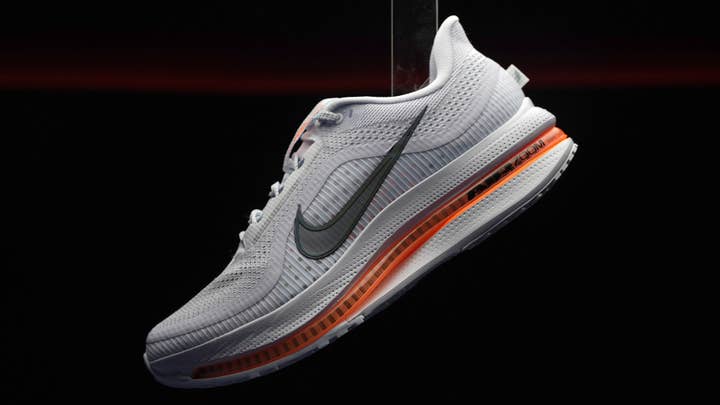
Nike Air units aren’t supposed to look like this. In the decades since Nike introduced its most famous cushioning system back in 1978, the sneaker company has exposed, stretched out, and sized up the inflatable pockets in the soles of its footwear. There are Air bags that look like miniature hot dogs and others modeled after arachnids.
This history of Air has been relatively flat and linear—the units take new shapes, but they generally move in straight lines. As much as Nike has been able to do with Air, it’s never quite managed to curve or bend the cushioning within the shoe, letting it rise and fall across the x-axis.

“We’ve tried in different ways and have never been able to do it,” says Kathy Gomez, Nike’s VP of footwear innovation. “They pop, or they melt, or they don’t stay shaped.”
The Nike Pegasus Premium changes all that. The model, unveiled by Nike in Paris this week alongside a new range of product tied to this summer’s Olympics, lets its long Air Zoom unit dip down from heel to toe.
Nike says the unit is its first sculpted, visible Air Zoom unit. The 20-PSI piece, rendered here in flashy orange, looks something like a stretched-out question mark squished into the midsole. Nike hasn’t announced a release date or price for the Pegasus Premium, teasing only that it will arrive in Spring 2025.
The shape of the Air Zoom in the Pegasus Premium brings to mind the carbon fiber rockers used in the “supershoes” Nike helped popularize in the late 2010s. As those shoes did, the Pegasus Premium sandwiches cushioning technologies; the Zoom Air is surrounded by ZoomX foam in the midsole and ReactX foam on the bottom.

Air soles can be finicky. They have to be shipped across continents and are subjected to different temperatures in their journey, and a bag that’s going to bend in a certain direction needs to stay that way in a range of conditions.
“We make the Air soles and then they go to the shoe factory,” explains Gomez. “So it’s a whole separate process.”
Nike makes the unit in the Pegasus Premium settle into its form by post-processing it in a jig, where heat is applied over time.
“We’ve figured out a way in the process to be able to shape it so it holds the shape,” says Gomez, “and it holds the integrity of the Zoom.”
How does this actually feel for the wearer? This writer put an early pair on for a few minutes in Paris this week, and found the ride quite springy—more so than the Dn, Nike’s other big new Air shoe in 2024. (Unlike the Dn, the Pegasus Premium is an actual running shoe.) The Pegasus Premium fits true to size and has way more bounce than the average Nike Pegasus. It’s not as snappy as a carbon fiber–plated shoe, and instead gives a cartoony, almost wobbly impression. The shoe genuinely feels more fun than serious racing shoes like those from Nike’s Alphafly line.
If there is a predecessor to the Pegasus Premium, it’s the Zoom All Out, the Nike running shoe from 2016 that had a long Zoom Air unit. It also had a ride that Gomez describes as slappy, with the toe pulling down too much. The Pegasus Premium, with its curved Zoom Air, wants to be more flexible. This is achieved, according to Gomez, partly through the exposure on the unit’s sides, which aren’t held in by foam—the visibility is great for marketing, but also allows the shoe more lateral give and room to squish around.

“It allows the Air sole to deflect in an unencumbered way,” Gomez says.
The continuance of a given Air unit is dictated by its commercial success. While the one used in the Nike Pegasus Premium is novel, there’s no guarantee that it will be permanent. But even with the shoe’s release still on the horizon, and its reception by the public still undetermined, Nike’s VP of footwear innovation isn’t afraid to predict that shaping Air in this way may spawn many more shoes to come.
“Now the thought of curving or shaping an Air sole is almost a new platform for us,” says Gomez. “So then you go, how else might we use this?”

